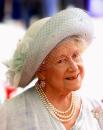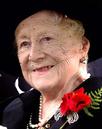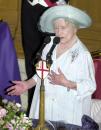 "Icon of our century"; "The nation's favourite grandmother"; "The richest jewel in the Royal Family's crown" - these are just some of the tributes that have, through time, been bestowed upon the Queen Mother. Entering her hundredth year, she is most certainly the longest-living British Royal in memory, and bears testament to some of the most significant developments and historical moments of our century. When she was born, the British Army was fighting its last great imperial war in South Africa, aeroplanes had not flown and gas lamps were yet to be replaced by electricity.
"Icon of our century"; "The nation's favourite grandmother"; "The richest jewel in the Royal Family's crown" - these are just some of the tributes that have, through time, been bestowed upon the Queen Mother. Entering her hundredth year, she is most certainly the longest-living British Royal in memory, and bears testament to some of the most significant developments and historical moments of our century. When she was born, the British Army was fighting its last great imperial war in South Africa, aeroplanes had not flown and gas lamps were yet to be replaced by electricity.
Born on August 4, 1900, Elizabeth Angela Marguerite Bowes-Lyon began life as a commoner. She was the ninth of 10 children born to Claude Bowes-Lyon and Cecilia Cavendish-Bentinck, a vicar's daughter and a descendant of the Dukes of Portland. Four years after her birth, her parents became Lord and Lady Strathmore. They remained somewhat impoverished for much of their lives.
 Elizabeth came to marry Prince Albert - HRH the Duke of York, the second son of King George V and Queen Mary. Elizabeth twice rejected Bertie's proposals, much to the shock of his mother, Queen Mary.
Finally, on January 13, 1923, as they walked in the woods at St Paul's Walden Bury, Elizabeth accepted his proposal of marriage. Three months later, on April 26, the couple were married at Westminster Abbey.
Elizabeth came to marry Prince Albert - HRH the Duke of York, the second son of King George V and Queen Mary. Elizabeth twice rejected Bertie's proposals, much to the shock of his mother, Queen Mary.
Finally, on January 13, 1923, as they walked in the woods at St Paul's Walden Bury, Elizabeth accepted his proposal of marriage. Three months later, on April 26, the couple were married at Westminster Abbey.
After the abdication of King Edward VIII, Elizabeth and her husband became King and Queen. Throughout the history of the English monarchy war has played an important role and for Elizabeth this was no exception. As a child she had tended wounded soldiers from the First World War and she now she found herself Queen to a nation during World War II.

The new pressures thrust upon the couple were only exacerbated by the outbreak of World War II. Despite strong advice that the Queen and the two princesses should leave London for Canada, the Queen refused to go. "The Princesses cannot go without me. I cannot go without the King. And the King will never leave," she said as she resolved to remain at Buckingham Palace. Instead she learned to shoot a revolver, practising her aim in the Palace gardens.
After air raids, the King and Queen - she dressed in the finest satin and furs - would visit the scene of devastation and offer consolation to those who had lost their homes. It was only after Buckingham Palace was bombed, however, that the Queen felt she could really relate to the people of London. "I'm glad we've been bombed. It makes me feel I can look the East End in the face," she famously said.
After Buckingham Palace was bombed during an air raid Elizabeth said that at last she could look the blitzed east end of London in the face as her home had suffered the same fate. On the death of her husband in 1952 she retired her position as Queen and her daughter became Queen Elizabeth II. Queen Elizabeth adopted the title 'Queen Mother' to avoid any confusion that may arise from having the same name as her daughter, Queen Elizabeth II.
 The Queen Mother has a hectic diary that includes state, military, civic and charity engagements. Although the Queen Mother ceased to be queen 43 years ago she continues to act in something of a shadow role in support of her daughter. The Queen Mother has shown that she can move with the times and has secured a unique position of affection in the hearts of the public. She has a rare and valuable blend of dignity, grace, an understanding of non-royal life and a straightforwardly pleasant personality. It is this combination, coupled with her steely reserve in times of hardship, that has conspired to produce one of our century's greatest living and much loved icons.
The Queen Mother has a hectic diary that includes state, military, civic and charity engagements. Although the Queen Mother ceased to be queen 43 years ago she continues to act in something of a shadow role in support of her daughter. The Queen Mother has shown that she can move with the times and has secured a unique position of affection in the hearts of the public. She has a rare and valuable blend of dignity, grace, an understanding of non-royal life and a straightforwardly pleasant personality. It is this combination, coupled with her steely reserve in times of hardship, that has conspired to produce one of our century's greatest living and much loved icons.
British Royal Family
